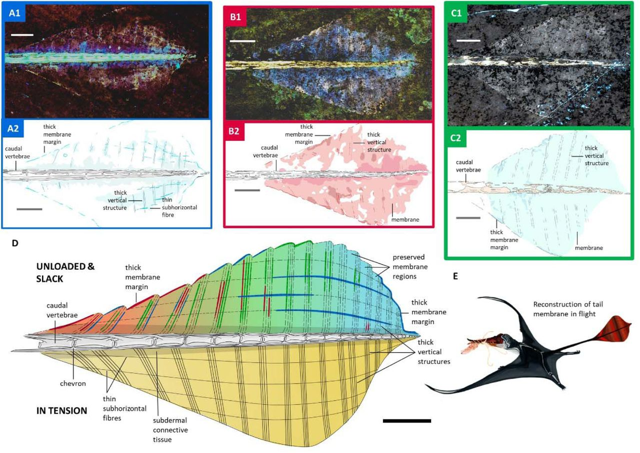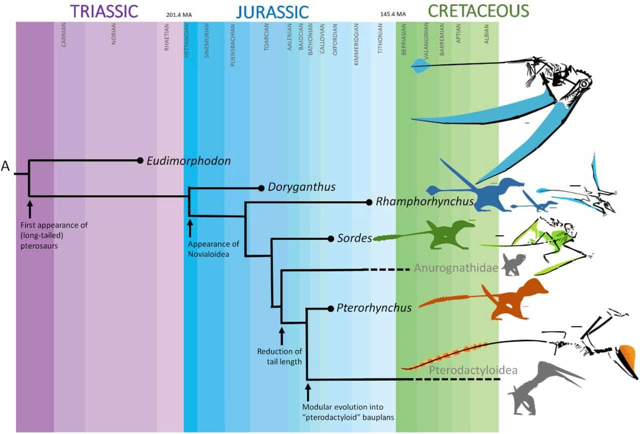Paleontologists discovered what enabled early pterosaurs to maintain stable flight.
The first vertebrate animals to master flight were pterosaurs. They emerged around 220 million years ago during the late Triassic period (251.9-201.3 million years ago) and developed numerous unusual features throughout their long evolutionary history. Some flying reptiles grew to colossal sizes — the largest being Hatzegopteryx and Arambourgiania, whose wingspans reached 10-11 meters, while others climbed trees, and thirds flew over oceans, feeding on fish.
Early pterosaurs were characterized by long, stiff tails that often ended with a soft tissue flap. There are several theories regarding its purpose. One hypothesis suggests that pterosaurs used the flap to attract mates, but many researchers agree on its mechanical function. Most likely, this feature helped the flying reptiles maneuver or maintain stability in flight. However, the fact that the shape of the tail flap varied among different species indicates its significance in the evolution of these animals.
An international team of paleontologists decided to study the internal structure of the tail flaps in early pterosaurs — Rhamphorhynchus (Rhamphorhynchus). A previous study from the 19th century suggested that these tissues contained flexible cartilaginous arches, which might have helped stabilize the flap during flight. This time, scientists used modern methods to analyze the structure of the preserved flaps and discovered two distinct sets of structures within. The details of the study are published on the preprint site bioRxiv.

The specialists selected 100 fossilized samples of soft tail tissues from Rhamphorhynchus muensteri, found in the Solnhofen limestone. They studied the presence of flaps using ultraviolet light — selecting four exceptionally well-preserved specimens for further investigation using laser-induced fluorescence (LIF). This method excites the material to emit photons, causing the areas that remained dark under ultraviolet exposure to glow. Previously, for instance, it allowed researchers to determine the flight type of the extinct bird Sapeornis.
The length of the flaps in the selected Rhamphorhynchus specimens ranged from 7 to 7.5 centimeters, which is just over 20 percent of the total tail length. In these diamond-shaped protrusions, specialists identified more than ten groups of straight structures positioned perpendicularly to the tail (one sample had 17 of them).

Their thickness (0.6-1 millimeter) and likely hollow structure suggested to researchers that they functioned as struts. In one Rhamphorhynchus specimen, paleontologists also identified several nearly horizontal thin fibers that passed through the vertical ones, forming a woven lattice.
The authors of the article concluded that these two sets of structures formed a grid that prevented the tail flap from stretching in opposing airflow. When deflected to the side, it was crucial for the flap to remain resilient and rigid to resist stretching. This allowed pterosaurs to better control their flight using the tail — the lattice would withstand loads during sharp movements.
Later varieties of flying reptiles completely abandoned tail flaps, shifting the center of mass forward towards the head and transferring control to the wings and cranial crest.